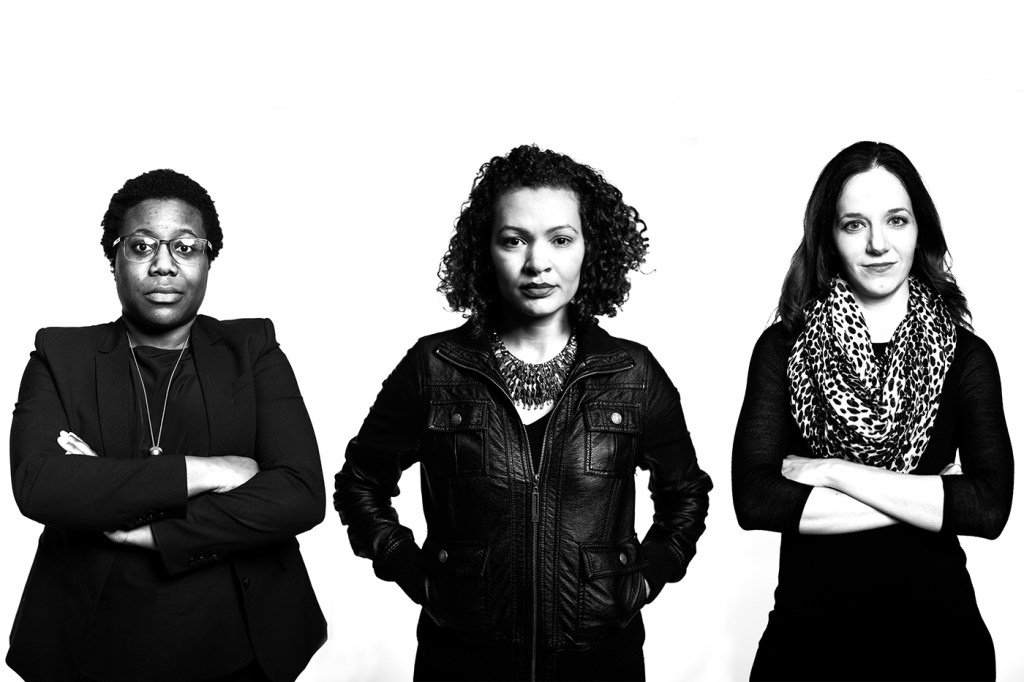What makes a hashtag like #metoo or #myNYPD go viral?

In April 2014, the New York Police Department started a social media campaign, asking its Twitter followers to use the hashtag #MyNYPD and tweet photos of themselves with police officers. A few folks participated, snapping and sharing pictures with officers at a Yankees game or Central Park.
But in a New York minute, the hashtag was hijacked. Twitter users suddenly started sharing their stories of brutality, misconduct, and shootings by police officers, tweeting them in images and words accompanied by the hashtag #MyNYPD.
Two Northeastern professors, Brooke Foucault Welles, a computational social scientist, and Sarah Jackson, a scholar of social movements, were watching this play out on Twitter in real time. They knew they had stumbled upon something interesting. Together, they decided to investigate how the hashtag was spreading.
Jackson and Welles created a network from a sample of 13,631 tweets that included #MyNYPD. They assumed the network would show that popular accounts with large followings—such as mainstream media outlets and celebrities—were responsible for making the hashtag go viral. But instead, they found something unexpected.
“We saw a bunch of people we’d never heard of before—local community organizers, online activism accounts with few followers,” Welles said. In other words, not established social influencers with clout, but regular people with a story they wanted to share. And these people were largely women and people of color.
In total, more than 100,000 messages with the hashtag #MyNYPD were posted to Twitter. The vast majority of these tweets were critical of the police—a complete reversal of the original intent of the campaign.
This is a type of media activism called “culture jamming,” said Welles, an assistant professor of communication studies in the College of Arts, Media and Design. And Twitter was providing the perfect platform for people to engage in this tactic.

Photo by Matthew Modoono/Northeastern University
The case of the #MyNYPD hashtag played out before the death of Michael Brown, an unarmed African American man who was fatally shot by a police officer in Ferguson, Mo. The incident helped ignite the Black Lives Matter movement.
Seeing the hashtag #MyNYPD go viral as a platform for discussion of police brutality before it had become a nationwide subject of debate was surprising, Welles said.
Jackson and Welles outlined a new theory: marginalized populations could successfully adopt hashtags as a vehicle for activism.
“These groups that have been historically excluded from mainstream spaces came together online and advocated for change together,” Welles said. “They were spreading this counter-narrative that was very different than the story about police we normally hear in the mainstream outlets.”
The story of #GirlsLikeUs
Joined by Moya Bailey, a scholar of critical race, feminist, and disability studies at Northeastern, the researchers began an interdisciplinary project called #HashtagActivism: Networked Counterpublics in the Digital Age. They are also writing a book based on their research, which will be out in early 2019.
They have broadened their investigation to include hashtags concerning race, gender, and sexuality.
The hashtag #GirlsLikeUs revealed new evidence for their theory.
Created by a woman named Janet Mock specifically for trans women to connect online, #GirlsLikeUs took on a life of its own as women began using it to share information and resources, Bailey said. For example, some used it to find doctors who were willing to perform affirmation surgeries, also known as gender reassignment surgeries.
The Northeastern researchers also found that using the hashtag seemed to be cathartic for people. It allowed them to create a community online that they lacked in their offline worlds. “We’re finding so many ways these networks have real-world impact,” said Bailey, who was recently chosen as one of ESSENCE Magazine’s “Woke 100 Women.”
How do you measure the impact of a hashtag?
One of the hashtags Bailey, Jackson, and Welles investigated is #YesAllWomen, a predecessor of the #MeToo hashtag, which was created by activist Tarana Burke in 2006 but went viral in 2017 when celebrities adopted it to allege prolific sexual abuse by Harvey Weinstein. The movie producer has since been removed from his company after being accused of rape by multiple women and is facing civil and criminal lawsuits. Eric Schneiderman, New York’s former attorney general, was an outspoken critic of Weinstein. But Schneiderman is now facing sexual abuse allegations himself.
#YesAllWomen started after a 22-year-old man in Isla Vista, California shot and killed six people and injured 14 others near the campus of University of California, Santa Barbara, before killing himself. In a video confession he recorded before the shootings, the man cited both his contempt for women and frustration at not having a girlfriend as motives. This sparked a heated discussion online. Men tweeted #NotAllMen to express the idea that not every man is a violent misogynist. In response, women began sharing their stories of discrimination with the hashtag #YesAllWomen.
“People started talking about how the shooter’s actions were an extension of rape culture and misogyny, and how all women experience those in some ways in their lives,” Jackson said. “They took this high-profile shooting and news story and attached this hashtag to it, and were able to have important conversations about the way gendered violence affects women every day.”
People not directly affected by violence against women began to use the #YesAllWomen hashtag to express support for victims and activists, a phenomenon Bailey described as a successful example of “allyship.”
“There were men who helped forward that narrative by saying, ‘you can direct message or tweet me with what you want to say, and I’ll repost it so the message won’t have your handle attached to it, so you can have some cover if that’s useful to you,’” Bailey explained. The researchers included this example in a chapter on allyship for their upcoming book. It’s a loaded topic, because while allies mean well, their efforts can be misguided.
For example, the hashtag #CrimingWhileWhite was an attempt by white allies to commiserate with victims of racial injustice, by retelling how they received more lenient punishments than people of color who committed the same crimes.
“White people talking about the crimes they’ve gotten away with doesn’t actually do very much for the black people who are harmed by that disparity, so we didn’t actually find that hashtag as useful,” Bailey said.
Welles said that studying how hashtags evolve is important because they can be a powerful tool to spread awareness, create community, and instigate policy change. She cited as an example some of the changes in policing that came about as a result of the Black Lives Matter movement, such as state and municipal investments in body cameras, and the placement of social workers in some police stations.
The architecture of Twitter further enhances the way hashtags expose people to issues they may have otherwise ignored or missed: Users see trending topics on the site’s homepage, even if their personal network isn’t discussing the subject.
“Many, many people use social media to get their news and understand what’s going on in the world,” Jackson said. “As citizens, we’re able to have conversations and debates with each other and see perspectives we maybe hadn’t considered before through a hashtag going viral, and that makes a difference.”





